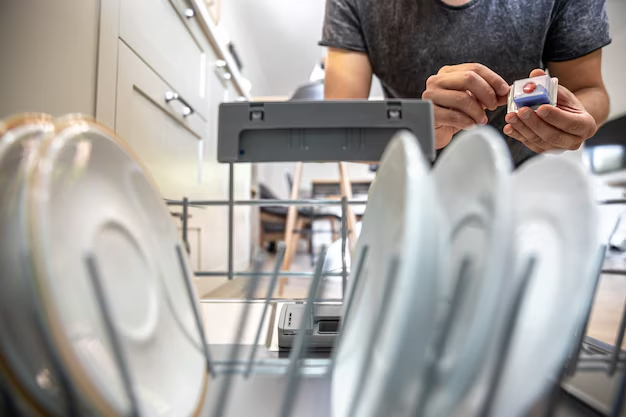What Temperature Should Your Refrigerator Freezer Really Be Set At?
We've all experienced it—reaching into the freezer for a late-night snack only to find icy chunks where creamy texture should reign supreme. Finding that sweet spot between blocks of ice and unfrozen chaos is more than a matter of taste; it's essential for ensuring food safety and energy efficiency. So, how cold should a refrigerator freezer actually be?
The Ideal Freezer Temperature
Standard Settings for Optimal Performance
The consensus among most experts is that your freezer should be set to 0°F (-18°C). This temperature strikes the perfect balance, ensuring that your food remains frozen and safe from the proliferation of bacteria. Freezers at this temperature are efficient in preserving nutrients in your food while keeping textures as close to their original state as possible. You might wonder why this specific degree? Well, -18°C has become the gold standard because it inhibits the growth of bacteria and slows down the enzyme activity that leads to food spoilage.
Moreover, maintaining a constant temperature ensures that your appliance operates smoothly without unnecessary energy expenditure. Regularly fluctuating temperatures can result in higher electricity bills and wear out your appliance faster.
Why Temperature Matters: Safety & Quality
Ensuring your freezer maintains the appropriate temperature is paramount not just for taste but for health reasons, too. Freezing suspends bacterial growth, safeguarding you and your family from foodborne illnesses. However, if the temperature in your freezer rises even slightly above 0°F, produce, and meats can start to lose their quality. On the flip side, setting your freezer too low may lead to freezer burn, resulting in degradation of texture and taste.
Don’t Forget About the Fridge
While this article's focus is primarily on freezers, understanding how your fridge and freezer work together is beneficial. Your refrigerator should linger around 37°F (3°C) to keep food fresh but not frozen. This balance prevents spoilage and maximizes the shelf life of perishable items.
Getting to Know Your Freezer
Different Types of Freezers
Knowing the ins and outs of various freezer types can help in setting the correct temperature:
- Upright Freezers: Typically more convenient with shelves for organization. They may require defrosting behavior checks.
- Chest Freezers: Offer deeper storage and are often more energy-efficient. They usually maintain more consistent temperatures.
- Built-In Refrigerator Freezers: These often share a compressor with the refrigerator and can fluctuate if the unit is overloaded or poorly ventilated.
Energy Efficiency Tips for Perfect Freezing
When aiming for that 0°F, remember these easy steps to avoid temperature fluctuations and maximize efficiency:
- Keep It Full: A full freezer maintains its temperature better than an empty one.
- Organize Properly: Efficient organization prevents freezer doors from being left open.
- Avoid Door Openings: Frequently opening the freezer door can cause a rise in temperature.
- Regular Maintenance: Clean the coils periodically and ensure good air circulation.
📝 Quick Tips for Maintaining Your Freezer Health:
- 🥶 Keep It at 0°F: The ideal baseline for most homes.
- 🧊 Allow Leeway: Avoid overcrowding to support air circulation.
- 📅 Schedule Regular Checks: Verify the internal temperature every month.
- 🧹 Clean Periodically: Vacuum out dust from coils.
- 🧪 Use a Thermometer: Always keep a fridge/freezer thermometer inside.
Troubleshooting Temperature Issues
Common Freezer Problems
Even with careful maintenance, freezers can sometimes act up:
- Inconsistent Temperature: Often a sign of a door not sealing properly or blocked air vents.
- Frost Buildup: Can occur due to humidity entering from long door openings or a faulty gasket.
- Overworking Motor: High energy consumption might result from dust-clogged coils or old age.
For these issues, simple fixes can often restore functionality, like sealing gaps, rearranging items to unblock vents, or cleaning dust off exterior coils.
When to Consult a Professional
If common problems persist, or if you've noticed your appliance overworking—leading to increased electricity bills or constant motor humming—it may be time to consult a professional for maintenance or possible replacement advice.
The Ultimate Efficiency Checklist 🛡️
- Keep It Sealed: Ensure doors close tightly without obstruction.
- Check Temperature Regularly: Use reliable thermometers to monitor.
- Proper Ventilation: Ensure sufficient space around the unit for air circulation.
- Stock Wisely: Full, but not overcrowded, is the rule.
- Energy Audits: Consider regular energy-efficiency checks, especially in older units.
Practical Advice for Every Household
Beyond just setting your freezer to the correct temperature, here are a few actionable insights:
- Batch Cooking: Prepare meals that can be frozen efficiently, saving both time and energy.
- Labeling: Always date and label your freezer items for improved stock management.
- Rotation: Follow the rule "first in, first out" to avoid food waste, keeping older items up front for use first.
Ultimately, understanding the nuances of both refrigerator and freezer temperatures is crucial for extending the shelf life of your foods, ensuring safety, and optimizing energy use. Keep these key insights in mind to bring both peace of mind and gourmet contentment to your daily culinary experiences. Whether you're freezing tonight’s leftovers or preserving summer berries for winter, the right settings ensure your food's flavor and nutrients remain just as fresh as the day you purchased them.
Temperature control is about more than just chilly air; it's a cornerstone of efficient household management. Enjoy the dual benefits of sustainably extending the life of your groceries while savoring delectable meals, all with the perfect temperature touch!
